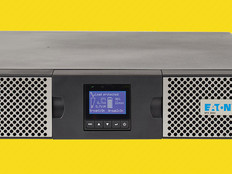Best for Feds to Prepare for the Worst
At any given time, disaster could be right around the corner for IT teams, from cyberattacks to network failures, earthquakes or blizzards.
The most successful technology leaders always have a plan B for when things go wrong, not to mention plans C, D and E. Many were put to the test this past winter when a series of snowstorms passed through Washington, D.C., challenging several agencies’ continuity of operations plans.
Our feature “Federal Agencies Use Tech to Prepare for Disaster” shares how agencies such as the Office of Personnel Management prepare technology for these types of incidents, allowing them to stay connected and continue their missions without interruption.
There is one enduring theme throughout the story: Disaster preparedness is an everyday process. OPM CIO Donna Seymour says that employees used to the tools needed to work remotely are well rehearsed for the days when things go astray.
Telework is a key aspect of technology disaster planning. As “Telework Technology Enables Flexible Work Schedules” explains, agency telework goes beyond allowing federal workers to work from home when their children are not in school. Telework is a powerful tool that can connect employees to their coworkers at a moment’s notice, including those in the field who may interact directly with citizens during times of crisis — something FEMA CIO Adrian Gardner discusses in our Q&A, “IT of the Storm."
The Right Approach to Disaster Recovery
While there may be no way to stop natural disasters, agencies can attempt to prevent technological ones. The Defense Department is taking steps to secure its architecture with Joint Regional Security Stacks, detailed in “DOD Moves Forward on Joint Regional Security Stacks.” That piece, along with “FISMA 2.0: Feds Meet New Security Standard," is part of a special package highlighting the government’s ongoing cybersecurity evolution to include next-generation technology and approaches.
While no one wants to spend time wondering what might happen when things go wrong, new technology does allow IT leaders to dream about how it could change an organization for the better.









